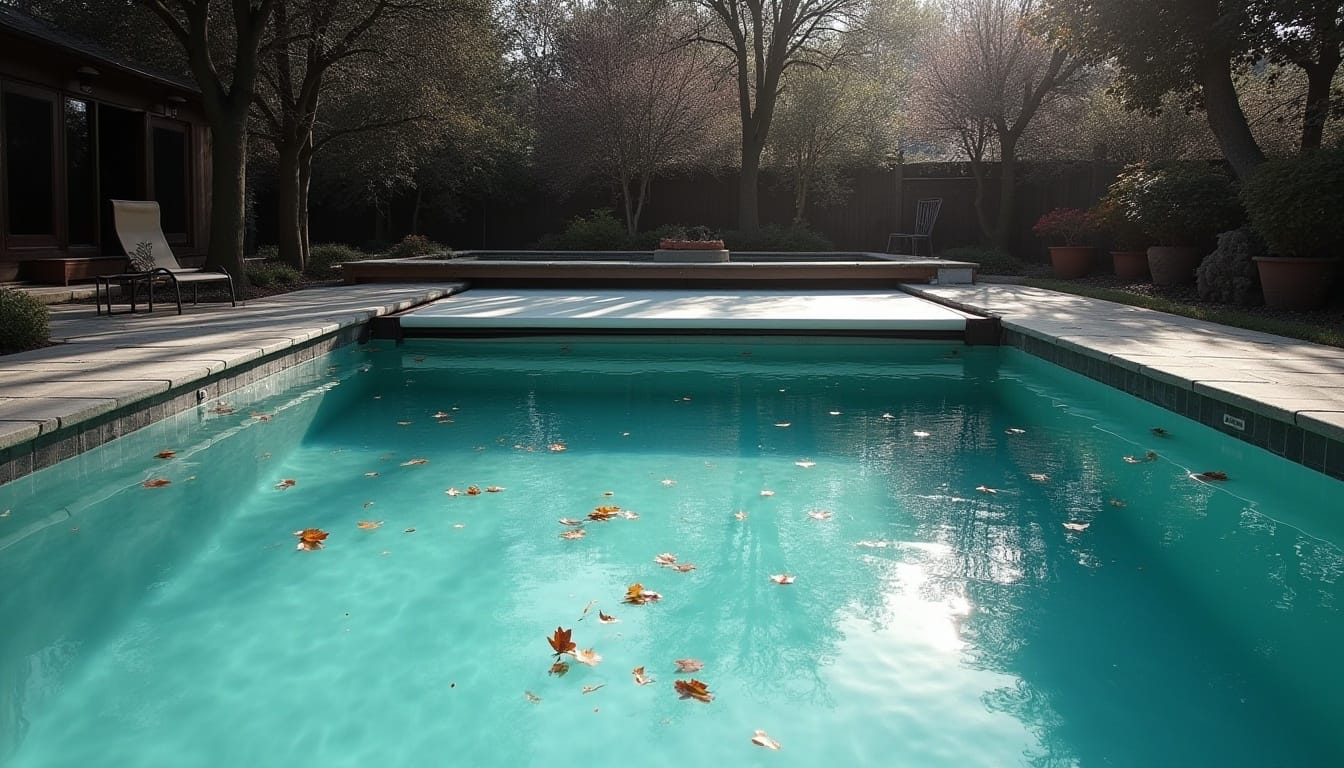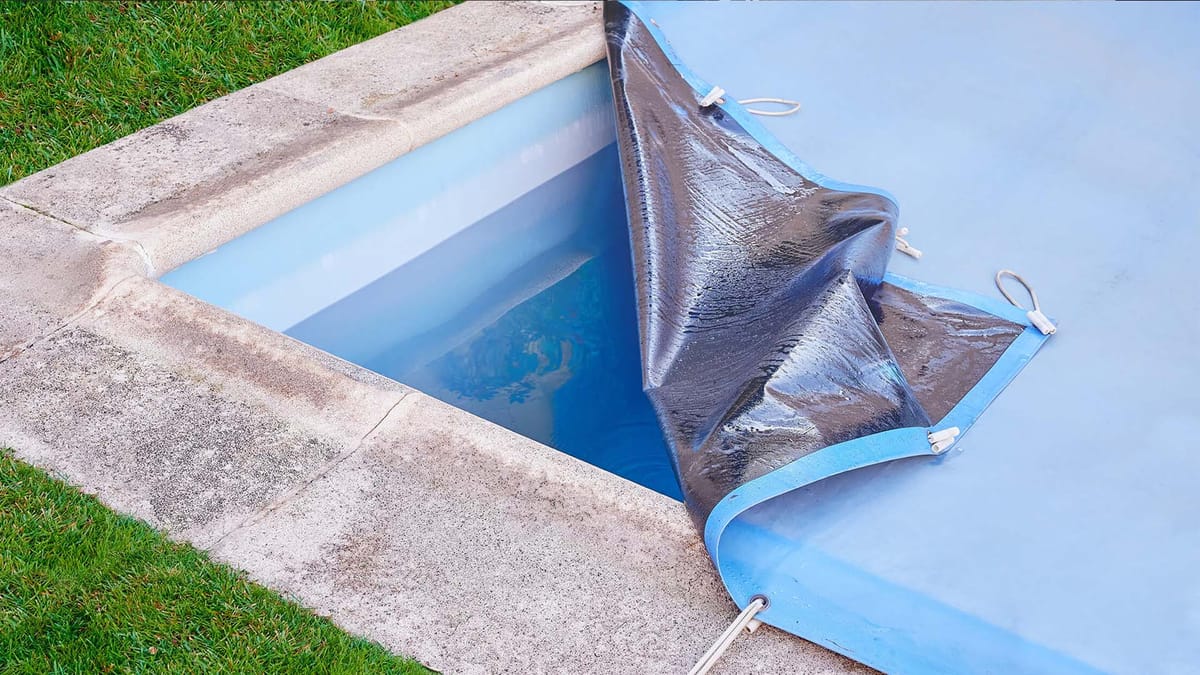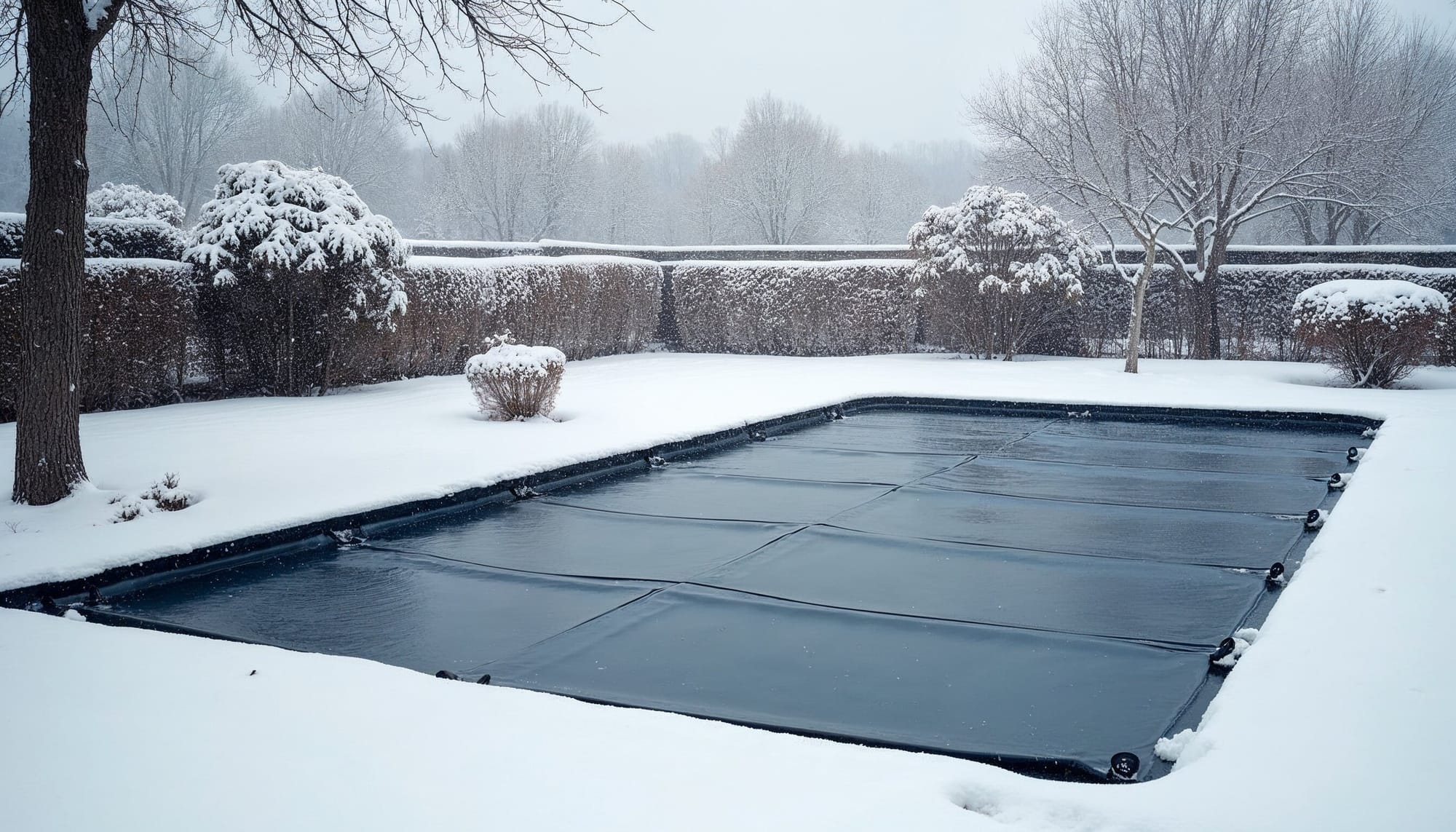How to Repair Your Pool Cover: A Money-Saving DIY Guide

Pool safety covers usually come with a 10-12 years warranty and can last even longer.
A tear or hole in your pool cover doesn't mean you need to replace it completely. Small rips under 6 inches are easy to fix. Your pool cover's life can be extended, and you can save money with this repair guide that covers everything from tiny perforations to larger tears.
Quick action prevents small holes or tears from growing bigger. The market now offers affordable products that provide lasting and durable solutions for pool cover repairs. You can make repairs that last for years with just a few simple tools and some effort.
Replacement becomes the only option sometimes. Your best choice would be a new pool cover if you see widespread deterioration or tears too large for a patch kit. Let's help you assess the damage and fix it yourself before making that decision.
This piece guides you through different types of pool cover damage. You'll learn to spot fixable issues and get step-by-step DIY repair methods. We'll also show you when it's time to call professionals or get a complete replacement.
Identify the Type of Pool Cover Damage
You need to spot damage early to make your pool cover last longer. Let's get into the most common pool cover problems you might face.
Small holes and tears
You should check your pool cover often for damage. Watch out for discoloration and worn spots that usually show where holes might form. A puddle that keeps showing up in the same place might mean water leaks through a tear below. When you find damage, measure it—you can fix holes smaller than 2 inches across or tears under 3 inches long with patch kits. Small holes can get bigger quickly if you don't fix them right away.
Sagging or slipping covers
Winter moisture makes covers sag a bit normally, but too much drooping needs your attention. Safety covers that sag by a lot during cold months might show that your pool's losing water underneath. The covers can also slip into the pool when snow gets heavy or they aren't secured properly. This creates a real danger because kids or pets could fall in. Slipping also lets algae, water, and debris mess up your pool.
Water or debris accumulation
Water and debris sitting on your cover add too much weight and will tear it over time. Piles of leaves, branches, and other stuff make your cover sink down. Then water pools attract worms and bugs, which bring birds that might peck holes in the material. Your cover gets weaker when water sits on it after storms or snow melts.
Mechanical issues in automatic covers
Automatic covers tell you something's wrong when they make weird noises or stick while moving. First, check if the motor runs—silence usually means no power. If the motor's running but the cover won't move, don't push it or you'll cause serious damage. Dirty tracks, worn-out ropes, or bad pulleys often make the cover move unevenly. Pay attention to strange sounds that might mean mechanical problems need fixing right away.

Assess Whether Repair Is Possible
Your pool cover damage needs a thorough check to decide if repairs will work. Let's look at what helps make this decision.
Check the age of the pool cover
The age of your pool cover plays a crucial role in whether repairs make sense. Patching works well for covers that are just a few years old without other wear and tear, especially when you have invested in an expensive one with a long warranty. Safety covers usually come with 10-12 year warranties and can last longer. A cover that's been protecting your pool for a decade or more should be replaced since hidden wear might have weakened it.
Measure the size and location of the damage
The damage size determines if repairs are possible. Small tears under 6 inches can usually be fixed. Tears bigger than 6-7 inches or those with curves are much harder to repair. You should measure the damage carefully and check if it's near seams or stress points. The patch needs to be about 2 inches larger than the tear on all sides.
Evaluate material compatibility for repair
Each cover type needs specific repair materials:
- Solid pool covers (floating type): Moisture-resistant polyethylene tapes work best - don't use cloth tapes like Gorilla Tape
- Safety covers (anchored to deck): Use safety cover patch kits or rubber cement with matching materials
- Mesh covers: Industrial-strength nylon thread works best for sewing repairs
When to consider pool cover replacement
A new cover might be your best option. Think about replacement when:
- Your cover is older than 10 years
- You see lots of damage with tears bigger than 7 inches
- Repairs cost half as much as a new cover
- The cover can't meet safety standards anymore
- The material feels stiff and brittle instead of flexible
DIY Pool Cover Repair Methods
You can fix most pool cover damage at home with the right materials and techniques. Let's head over to some repair methods that will save your money and make your cover last longer.

Using patch kits for small tears
Small tears under 6 inches are easy to fix with the right patch kits. Solid pool covers that float on water need polyethylene tapes rather than cloth varieties like Gorilla Tape. Mesh safety covers need specific mesh patch kits with self-adhesive patches about 6-8 inches long. Vinyl covers work best with vinyl patches that have matching adhesive.
Applying reinforced repair tape
Reinforced repair tape delivers exceptional durability for many types of covers. Aluminum reinforced PE tape creates excellent waterproof repairs. High-strength UV-resistant tape works best for solar covers. Reinforced weave repair tape designed for HDPE material gives you environmental resistance and tensile strength even when temperatures reach 40°C/104°F.
Fixing straps and seams
High-tensile strength web strapping can reinforce worn straps. You can fix broken straps by sewing new nylon webbing through the clip and attaching it to the remaining strap with an 'X' pattern using heavy synthetic thread. Thin fishing line also works great for stitching damaged seams.
Tips for effective adhesive bonding
Your repairs will work better if you:
- Clean and dry the area completely before patching
- Cut patches with rounded corners to stop lifting
- Put patches on both sides of the cover for better durability
- Place something heavy on the patch for 6-12 hours
- Keep the cover unfolded around the patch area
Common mistakes to avoid
Despite good intentions, watch out for these mistakes: using cloth tapes on solid covers, putting patches on wet surfaces, cutting patches with pointed corners that peel easily, and trying to fix tears larger than 7 inches by yourself. Note that patched fabric on safety covers will never be as strong as the original material, so major damage might need professional help.
When to Call a Professional or Replace the Cover
DIY fixes don't always work with pool cover damage. Here's how to know it's time to call the experts.

Signs the damage is beyond DIY repair
Your pool cover might show signs like heavy fading, frayed edges, or holes that you can't fix. Repairs might not be enough when the cover stops doing its job. A cover that keeps sagging or won't stay put shows signs of failing structure. Safety covers need immediate professional attention if they're badly damaged - they won't protect anyone in that state. The mechanical parts in automatic covers need trained professionals if they break down to prevent bigger problems.
Cost comparison: repair vs. replacement
Simple DIY fixes with patch kits cost about 15~30 AUD. Professional services charge about 100 AUD per hour. Total repair costs range from $150 to $1,500 AUD, depending on the severity of the damage. Repairs might seem economical now, but multiple fixes add up quickly over time. The long-term value of a new cover often outweighs repair costs.
Finding a reliable pool cover repair service
The manufacturer's approved service providers are your best bet. Local dealers and installers make great repair partners, too. A quick search for "pool cover repair near me" shows many local options. Professional technicians spot the real problems fast and help avoid unnecessary replacements.
Warranty and manufacturer support
Most manufacturers' warranties cover repairs or replacements for manufacturing defects. These warranties don't usually cover normal wear, chemical damage, or misuse. Note that warranty claims work only for covers with seam separation issues. Valid claims need your dealer's help and purchase details.
Conclusion
Pool cover repairs might look scary at first, but you can fix many common problems yourself. Small tears under 6 inches, minor holes, and damaged straps usually need just the right patching technique and materials. Quick action on small damages will save you from bigger problems later.
Your cover's age is a vital factor in the repair-or-replace decision. New covers with single damage spots are perfect for repair. Covers older than 10 years may need replacement, regardless of their shape.
You must match your cover type with the right repair materials. Solid covers need polyethylene tapes, safety covers require specialized patch kits, and mesh types need industrial-strength thread. Clean surfaces, rounded corner patches, and proper drying time will make your repairs last longer.
Never cut corners on safety. Covers with big damage, multiple tears, or those that don't protect anymore need professional help or replacement. Your pool cover's main goal is protection—for your pool and everyone around it.
This piece should help you save money and keep your pool cover working great for years. Check your cover regularly, address small issues promptly, and know when to consult the experts for further assistance. Explore Aiper for more information on additional devices and pool maintenance tips. Your pool will stay protected and ready whenever you want to swim.


